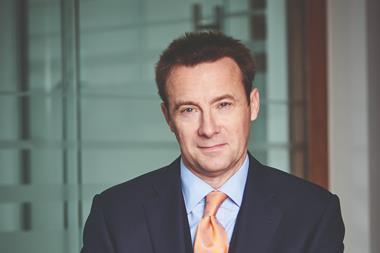Nearly two years ago, I wrote an article called ‘The End of Smith’, in reference to the father of modern economics Adam Smith. I believed then (and now) that the pandemic was the final nail in the coffin of the artistic science of economics.

Since 2008 and the advent of mass quantitative easing, the impact of mass liquidity, an unrelentingly efficient market and historically low interest rates had totally changed the bedrock of modern economic theory.
My thesis was simple: there would be mass liquidity, markets would outperform, the real economy would splutter and – this is where I was wrong – there would be limited inflation and very limited interest rate rises.
I still believe rate rises will be limited, likely reversed, and current inflation will be temporary – perhaps becoming deflationary within 18 months. Inflation has taken hold because of a perfect storm of circumstances including a longer-than-forecast pandemic, a war in Europe and the rise of nationalism interrupting supply chains and labour movement.
Inflation might hit 10% in real terms this year, yet even the most bearish forecasts do not have UK interest rates exceeding 2%. This indicates that economic thinking needs modernising.
Current inflationary factors will eventually become deflationary as market efficiencies return. Energy inflation is being driven by soaring demand, mostly because of economies reopening post-Covid and constrained supply, due to the lingering impact of the pandemic and the Ukraine conflict.

But demand will stabilise and supplies will increase – $100 a barrel promotes oil production and limits demand as people consider cleaner energies and improved efficiency, meaning oil prices fall in the medium term. As the conflict ends, gas supplies will stabilise, but the hike in value over the past year means it is no longer considered the cheap, efficient energy source it once was. This should accelerate moves to alternative energies, limiting demand and causing a price drop, ergo deflation.
Labour shortages are leading to wage inflation in Britain. This could be seen as positive, but wage inflation is a double-edged sword. Businesses will seek efficiency and profit, meaning a quicker adoption of automation, which caps wage inflation and results in wage deflation.
With the backdrop confused by the likelihood of deflation, central bankers are faced with the ‘Greenspan Paradox’. They cannot afford to do nothing and have to raise interest rates, but they cannot go too far, as the global economy could conceivably fall into recession. Interest rises will likely be modest (in my opinion, UK base rates are unlikely to exceed 1.5%) and be undone as we head into 2024-25. Inflation will hit a high point this year but will recede as the drivers reverse and the cost-of-living crisis affects consumers.
Hyper liquidity is still prevalent and as real estate is considered an inflation hedge, there is unlikely to be much of a slowdown in the market. The impact of rising interest rates will be limited to assets that don’t display rental growth characteristics. High inflation, relatively low interest rates and the hunt for yield will continue to drive money to real assets, benefiting real estate for the immediate future.
Richard Croft is executive chairman of M7 Real Estate
































2 Readers' comments